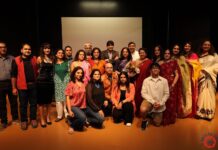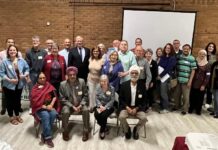Speakers at the EMS Briefing on July 13 provided an overview of how state agencies are addressing extreme heat’s impact on public health, the steps one city is taking to mitigate the heat, and what health care providers servicing specific groups are advising their patients to do.
This is the first of three statewide briefings tracking the onset of extreme heat in California, and what state and local agencies, and community-based organizations, are doing to help people and localities adapt. Heat Ready California, a web page launched by Governor Gavin Newsom to keep Californians safe during extreme heat.
Of all the natural disasters the world currently faces, extreme heat is the most pernicious. Nearly 62,000 people died from record-breaking heat in Europe last summer, according to a study published this week in the scientific journal Nature. Heat is scorching a broad stretch of the South and West in the United States and large parts of Europe. Meteorologists at the Weather Service are reminding us to “drink plenty of fluids, stay in an air-conditioned room, stay out of the sun, and check up on relatives and neighbors.
Dr. Lucía Abascal, MD, MS, Public Health Physician California Department of Public Health, Director’s Office shared some recommendations to stay safe during the hot season. For her, it is essential to stay in cool places, stay hydrated and not lose communication with friends, family and acquaintances who may be at risk.
Marta Segura, Chief Heat Officer and Director of Climate Emergency Mobilization, the City of Los Angeles said it is necessary to implement measures that provide protection against high temperatures. The city of Los Angeles is trying to create new strategies to reduce the cost of electricity in buildings, in low-income housing and in those where many families live. Last year, with the heat waves, people were using Cooling Centers more, and so we are trying to create more where they are needed. We have 10 cooling centers in Los Angeles and if you count the libraries, then there are more than 100 centers that the county has, he explained.
Sandra Young, Family Nurse Practitioner (retired) and founder, Mixteco Indigenous Community Organizing Project expressed her concern for California farmworkers, since most of them are exposed to intense heat while working, and are often paid for what they harvest, reason for which they prefer to expose themselves to long hours, and even without taking breaks to generate more income.
Kelly Turner, Associate Director of Urban Environmental Research, UCLA said we know that that extreme heat is going to get longer and worse in the future. And then that’s made even worse by the way we build cities regionally. We put a lot of buildings and that creates what’s often called the urban heat island effect, which makes whole cities hotter than places that are not developed sometimes. One of the most important things we can do to address the heat issue is to think specifically about shade infrastructure, since being in the sun feels the effects of heat more intensely.
Dr. Kimberly Chang, Family Physician, Asian Health Services said the Asian American, Native, Hawaiian, and Pacific Islander communities, studies found that from 2005 to 2015, the rates of emergency department visits for heat related illnesses increased by 53%. I talk to my patients about fans, windows, cooling, and light clothing. Wear light, loose clothes, and white clothes instead of black.
Vidya Sethuraman
India Post News Service







